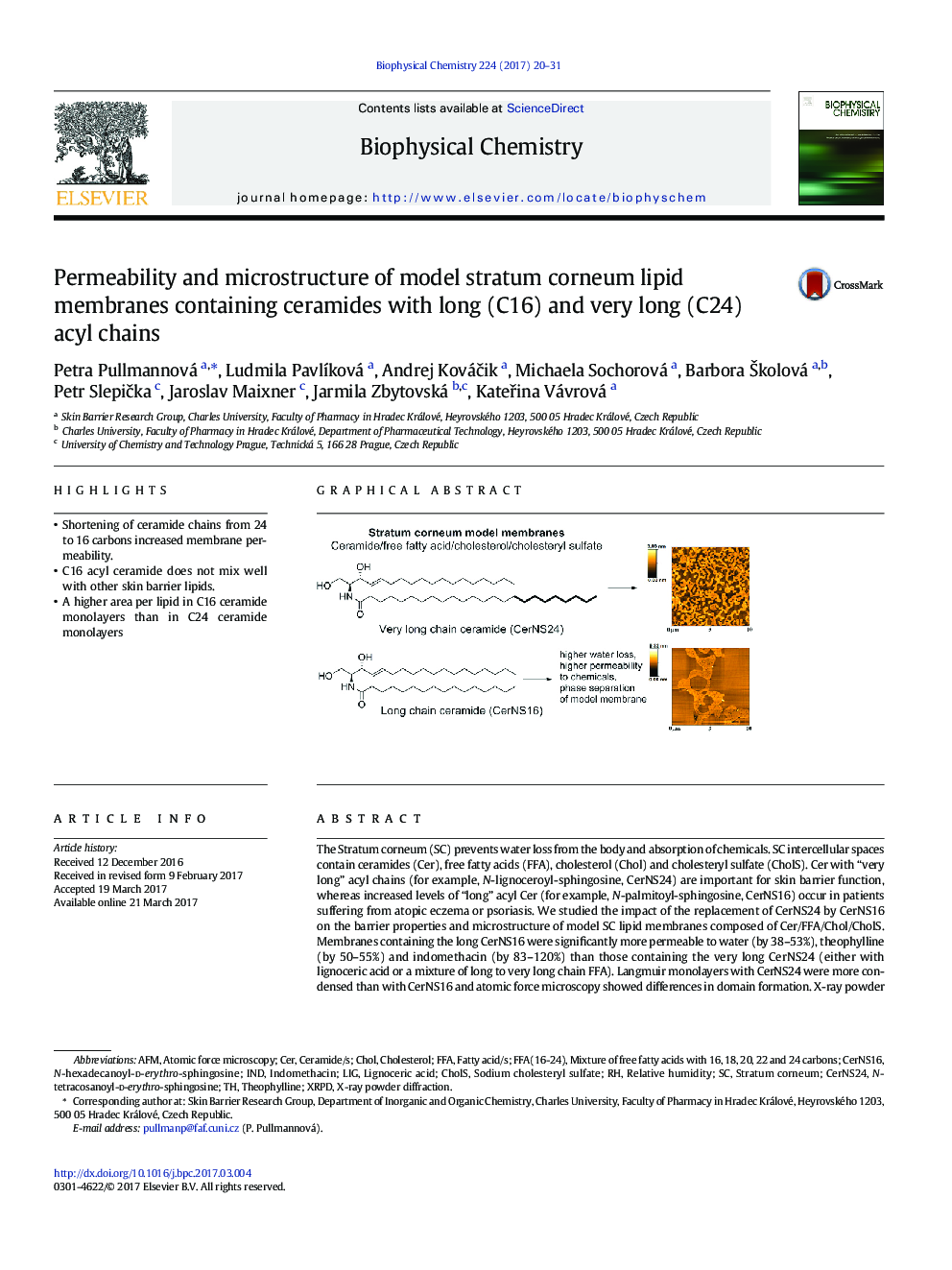| Article ID | Journal | Published Year | Pages | File Type |
|---|---|---|---|---|
| 5370671 | Biophysical Chemistry | 2017 | 12 Pages |
â¢Shortening of ceramide chains from 24 to 16 carbons increased membrane permeability.â¢C16 acyl ceramide does not mix well with other skin barrier lipids.â¢A higher area per lipid in C16 ceramide monolayers than in C24 ceramide monolayers
The Stratum corneum (SC) prevents water loss from the body and absorption of chemicals. SC intercellular spaces contain ceramides (Cer), free fatty acids (FFA), cholesterol (Chol) and cholesteryl sulfate (CholS). Cer with “very long” acyl chains (for example, N-lignoceroyl-sphingosine, CerNS24) are important for skin barrier function, whereas increased levels of “long” acyl Cer (for example, N-palmitoyl-sphingosine, CerNS16) occur in patients suffering from atopic eczema or psoriasis. We studied the impact of the replacement of CerNS24 by CerNS16 on the barrier properties and microstructure of model SC lipid membranes composed of Cer/FFA/Chol/CholS. Membranes containing the long CerNS16 were significantly more permeable to water (by 38-53%), theophylline (by 50-55%) and indomethacin (by 83-120%) than those containing the very long CerNS24 (either with lignoceric acid or a mixture of long to very long chain FFA). Langmuir monolayers with CerNS24 were more condensed than with CerNS16 and atomic force microscopy showed differences in domain formation. X-ray powder diffraction revealed that CerNS24-based membranes formed one lamellar phase and separated Chol, whereas the CerNS16-based membranes formed up to three phases and Chol. These results suggest that replacement of CerNS24 by CerNS16 has a direct negative impact on membrane structure and permeability.
Graphical abstractDownload high-res image (143KB)Download full-size image
